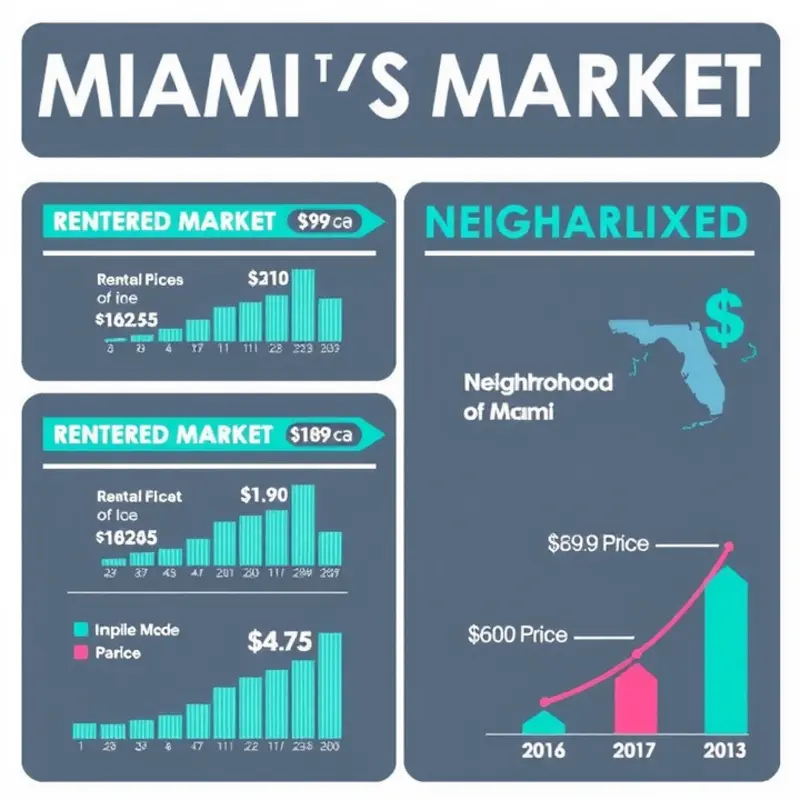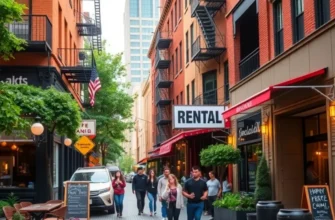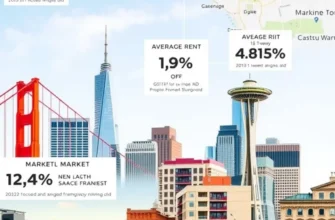Miami, known for its vibrant culture, beautiful beaches, and diverse communities, is an appealing destination for renters considering a new home. Whether you’re a young professional seeking the excitement of the city, a couple looking for a trendy neighborhood, or a family in search of more space and community amenities, Miami’s rental market offers countless options tailored to different lifestyles and budgets. With a blend of bustling urban life and laid-back coastal vibes, you’ll find neighborhoods ranging from the lively South Beach to the family-friendly Coral Gables. In this guide, we’ll explore the intricacies of Miami’s rental market, highlighting key areas, rental prices, and helpful tips to ensure you make an informed decision as you embark on this exciting journey.
Understanding Miami’s Neighborhoods

Exploring Miami’s neighborhoods can feel like navigating a diverse tapestry of cultures, each block offering its own unique flavor. As renters contemplate where to settle, understanding the distinctive characteristics of each area becomes essential. Let’s delve into some of the city’s most popular neighborhoods.
Wynwood is a hotspot for art lovers and young professionals looking for trendy vibes. Known for its colorful street art and vibrant galleries, Wynwood also hosts a bustling social scene with numerous bars and eateries. Renters can expect a lively atmosphere, with rental prices for a one-bedroom apartment generally ranging from $2,200 to $3,000 monthly. While the creativity and nightlife are major draws, the hustle and bustle may not suit those seeking a quieter life.
For a more serene atmosphere, Coconut Grove offers lush foliage and historic charm. Families are often drawn to its excellent schools, bayfront parks, and leisurely pace. The Grove’s rental market reflects its appeal, with one-bedroom apartments typically in the $2,300 to $3,500 range. However, keep in mind that the peace of Coconut Grove comes with fewer nightlife options compared to Wynwood.
Brickell is often dubbed ‘Miami’s Wall Street,’ attracting young professionals with its modern high-rises and proximity to the business district. Rentals here are on the pricier side, with one-bedroom apartments starting around $2,800 and climbing upwards. The convenience of urban living and proximity to public transit are significant advantages, though some may find it lacks the warmth of more residential neighborhoods.
If you’re seeking a blend of suburban and urban living, Doral might be the perfect choice. It boasts numerous parks and family-friendly amenities, making it ideal for renters with children. The rental market offers some relative affordability with prices for a one-bedroom around $1,700 to $2,300. While not as buzzing as Miami’s central neighborhoods, Doral compensates with community events and a plethora of dining options.
For renters prioritizing proximity to nature, consider Key Biscayne. This island paradise is just a short drive from downtown Miami and offers stunning beaches and outdoor activities. Families and retirees often settle here for the tranquility and top-tier schools, although rental prices are high, usually starting from $3,500 for a one-bedroom. The island life, while idyllic, demands a premium and a bit of a commute for city-bound workers.
Lastly, there’s Little Havana, a treasure trove of Cuban culture and history. Renters are drawn to its character and comparatively lower rental prices, averaging $1,500 to $2,200 for a one-bedroom. The rich cultural scene, filled with authentic eateries and vibrant street life, is unparalleled. However, it may not offer the modern amenities and luxury finishings found in other Miami neighborhoods.
Each of these neighborhoods makes Miami a mosaic of opportunities. Whether you’re a young professional, a family, or someone in between, there’s a neighborhood tailored to your preferences and lifestyle. For tips on organizing your new space efficiently, you might find these renter-friendly storage hacks helpful.
Navigating Rental Prices and Market Trends

In Miami, rental prices vary significantly depending on the neighborhood and property type. The upscale neighborhoods along the coast, such as Brickell and South Beach, command higher rents, with luxury apartments often exceeding $3,000 per month for a one-bedroom. Conversely, areas like Little Havana and Overtown offer more affordable options, with average rents for similar properties hovering around $1,500 per month.
To understand the dynamics of Miami’s rental market, one must consider several key factors. Seasonal tourism has a profound impact, particularly in the winter months when tourists flock to escape colder climates. This influx boosts demand, driving up short-term rental prices. However, if you’re looking for long-term rental options, it might be advantageous to sign leases during the off-peak months when demand subsides.
The development of luxury apartments continues to shape Miami’s rental landscape. As developers cater to affluent residents and investors, these high-end properties have introduced amenities that rival those in five-star resorts. While this adds allure to the city’s image, it also widens the gap in affordability. Luxury apartments push average rental prices upward, making it challenging for middle-class families to find budget-friendly housing.
Increasing demand for affordable housing presents a significant trend, driven by young professionals and families seeking sustainable living arrangements. This demographic looks beyond the allure of waterfront properties and focuses on accessibility and community amenities. As a result, neighborhoods slightly removed from the city center are gaining popularity, providing a mix of affordability and convenience.
For those considering a move to Miami, understanding the factors driving rental prices is crucial. Evaluating neighborhood characteristics and lifestyle needs will aid in making informed decisions. To delve deeper into ways to manage costs, you might consider exploring what affects rent prices.
Thus, whether you’re captivated by vibrant cultural scenes or Miami’s sun-kissed beaches, navigating the rental market with an eye on current trends and prices will help ensure a smooth relocation process.
Final words
As you consider relocating to Miami, understanding its rental market is crucial for finding the right fit for your lifestyle. The city offers a range of neighborhoods, each with unique characteristics to cater to students, young professionals, families, and more. With prices varying greatly across areas and a steady demand for rentals, staying informed and exploring all your options can lead to a successful search. Miami’s warm climate, rich culture, and dynamic atmosphere await, promising an enriching experience no matter where you choose to settle down.









